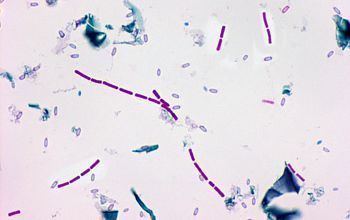Rank Species | Division Firmicutes Scientific name Clostridium bifermentans | |
 | ||
Similar Clostridium sordellii, Clostridium tertium, Clostridium sporogenes, Clostridium septicum, Clostridium novyi | ||
Medical vocabulary what does clostridium bifermentans mean
Clostridium bifermentans (CLOBI) is an anaerobic, motile, gram-positive bacterium.
Contents
- Medical vocabulary what does clostridium bifermentans mean
- Mosquitocidal Effect of Clostridium bifermentans subsp malaysia
- References
Mosquitocidal Effect of Clostridium bifermentans subsp. malaysia
Most Clostridial species are used for industrial applications but some are known to cause illness in animals and human. Only C. bifermentans strain shows mosquitocidal effect but presents no toxicity against nontarget organisms. Clostridium bifermentans subsp. Malaysia was a subspecies of clostridial species from a collection of the Institute or Medical Research Malaysia. It is the first known anaerobic bacterium possessing larvicidal activity. According to biochemical analysis of C. bifermentans subsp. Malaysia culture, the mosquitocidal toxins were produced by Cry operon, which carries four genes (cry16Aa, cry17Aa, cbm17.1, cbm17.2). When the four genes were individually expressed, none of the four proteins encoded exhibited mosquitocidal activity, suggesting that the toxicity requires four proteins cooperating as a complex to take effect. A single promoter was found upstream of the four genes, indicating that those four genes were likely to be expressed simultaneously. The half-life of toxicity was about 1 day and the toxin was unstable under high temperature. Although C. bifermentans subsp. Malaysia is shown to be more lethal to Anopheles mosquito larvae, the toxin produced by Cry operon has no mosquitocidal effect on Anopheles. Thus, the genes accountable for the toxicity towards Anopheles are different than those controlled by Cry operon. Rather, the toxins selectively target Aedes mosquitoes, causing a high mortality of this particular larva.
